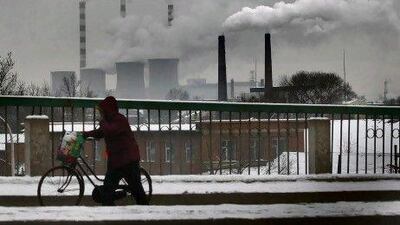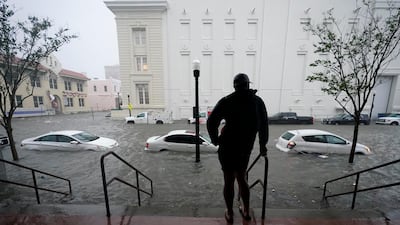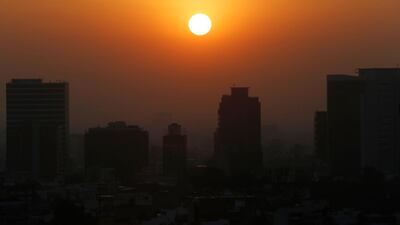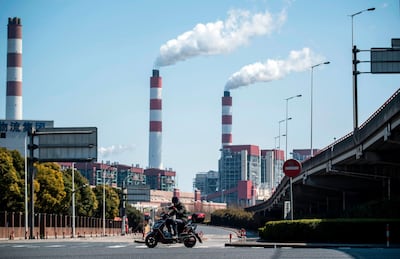One of the few bright spots in 2020 was the glimpse that Covid-19 lockdowns gave of a less polluted world.
But like the pandemic that sparked them, the big question for 2021 is how the world should react to what happened.
An unexpected experiment
The first few months of 2020 saw a deadly virus spread across the world, trigger a pandemic – and start an unplanned global experiment.
As governments raced to stem the spread of Covid-19 by putting their people in lockdown, the Earth’s climate began travelling back in time. With travel banned, non-essential businesses closed and energy demand plunging, emissions of carbon dioxide nosedived. By the start of April, they were back to where they were in 2006.
Climate scientists began pondering the impact of a sudden 17 per cent drop in emissions, which had until then been growing at 1 per cent a year. By the first half of the year, global emissions had fallen by more than they did at the end of the Second World War.
Yet barely had the global experiment revealed itself than it began to end. By early summer, lockdowns were being lifted, and global carbon dioxide emissions began heading back up.
As with the impact of the pandemic itself, however, the global figure hid startling national differences.
The draconian lockdown imposed in China allowed business as usual to be restored in weeks.
In contrast, the struggle of other countries – notably the US, the UK and France – to contain the virus led to deeper and longer-lasting dips in carbon emissions.
Ironically, this also reflected their relative success in cutting overall carbon emissions. Having moved away from the dirtiest forms of fossil fuels to generate energy, a higher proportion of comes from sources such as transport, which was greatly curtailed by lockdowns.
This has led to the startling statistic that America’s energy-related carbon emissions in 2020 are expected to be their lowest since 1991.
Short-term effects, long-term implications
Hopes that these consequences of the pandemic will slow, let alone stop, global warming are misplaced, however. The link between carbon emissions and increasing temperatures is complex, with changes taking decades to reveal themselves. The current consensus is that the dip in emissions won’t prevent the past five years from being the warmest on record.
Even so, this year’s inadvertent climate experiment is providing insights with long-term implications. Perhaps the biggest is its demonstration that reining in fossil fuel burning brings benefits far faster than those usually linked to fighting climate change – on timescales of weeks, rather than decades.
And the clearest example – quite literally – has been the improvement in air quality.
While Covid-19 has so far killed 1.7 million people globally, this is barely a quarter of the toll attributed to air pollution each year.
One of the most blighted nations is China, whose lockdown policy gave researchers a glimpse of what would happen to air pollution if treated with equal resolve. As expected, the lockdowns improved air quality. But the speed with which the benefits appeared was striking. Within just two weeks, air quality in cities had improved by about 25 per cent.
One notorious form of pollution remained at what the researchers called “alarming” levels, however: PM2.5 – particulate pollution linked to diseases including cancer. With the lockdown having shut down virtually all non-essential economic activities, its likely source was quickly identified: coal-fired heating in homes. The researchers believe coal-fired heating should now be a prime target for China’s environmental policies.
Lockdowns gave many other nations a glimpse of what a cleaner, more sustainable world would look like. In India – the site of 14 of the world’s 20 cities with the most toxic air – pollution levels plunged by as much as 75 per cent. Citizens of northern India claimed to be able to see the Himalayas for the first time in decades.
Meanwhile, European cities from Paris to Budapest also had big falls in pollution levels. Some, including Paris, Rome and Madrid, met World Health Organisation safe limits, although London did not. The drop in levels of oxides of nitrogen and ozone also led researchers to predict crop yields from Europe to East Asia.
As with Covid-19, the ending of lockdowns has seen a resurgence in pollution levels. Even so, the speed and scale of what happened in 2020 may prove crucial to policymakers trying to convince people – and politicians – that taking action on long-term climate change can bring some very quick wins.
What happens next?
With the pandemic still raging, 2021 will bring yet more lockdowns and more sudden slumps in greenhouse gas emissions. While these are unlikely to affect global warming, the world is still likely to witness strange weather in the coming months.
Part of the Pacific Ocean has been cooling in a phenomenon known as La Nina – “The Girl” – linked to upheaval in weather patterns right across the world.
Most of the US is expected to experience a relatively mild winter, while Australia is already being battered by strong winds and torrential rain. For the UAE, in contrast, La Nina usually means drier than average conditions.
As with the course of the pandemic, however, making reliable predictions is very difficult, especially about the future.
Robert Matthews is visiting professor of science at Aston University, Birmingham, UK









